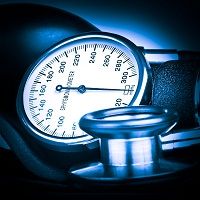Blood Pressure and Cardiovascular Outcomes in Diabetes
Several studies have reported that controlling blood pressure with medication improves cardiovascular outcomes.

Several studies have reported that controlling blood pressure with medication improves cardiovascular outcomes. Several professional organizations (including, until recently, the American Diabetes Association) recommended targeting a systolic blood pressure (SBP) of 130 mmHg or lower in diabetic patients, however little evidence supported this recommendation. The Journal of Human Hypertension has published a meta-analysis ahead of print that examines blood pressure in diabetic populations and looks for evidence to support a target.
The Australian researchers looked for randomized clinical trials comparing 5-year CV outcomes in patients with type 2 diabetes who did or did not attain SBP below 140 mm Hg. Studies had to have identified absolute risk reduction (ARR) for CV events in antihypertensive-treated patients with type 2 diabetes.
The authors found 10 studies of intensive versus moderate or active versus placebo therapy in subjects with type 2 diabetes that met their criteria. In each study, they determined ARR using group mean data and expressed as percent change in CV events over 5 years per 10 mm Hg SBP decrease.
Patients whose SBPs were >140 mm Hg were 8 times more likely to experience cardiovascular events.
Tight BP control defined as SBP <135 mm Hg was associated with a relative risk reduction of 10% in all-cause mortality and 17% reduction in stroke. Furthermore, results noted that serious adverse events were 20% higher in this group.
The tightest control to SBP <130 mm HG reduced stroke risk more, but serious adverse events were 40% higher than in patients who achieved SBPs of <140 mmHg.
The authors concluded that in patients with type 2 diabetes, SBP targets lower than 140 mm Hg decreased stroke risk, but the risk of non-fatal or fatal myocardial infarction remained stable. They suggested that patients at risk for stroke may potentially benefit from SBP targets lower than 140 mm Hg. Once SBP of 140 mm Hg is reached, clinicians could achieve better overall health results by focusing on CV risk factors like dyslipidemia, glycemic control, and aspirin in patients with pre-existing CV disease.